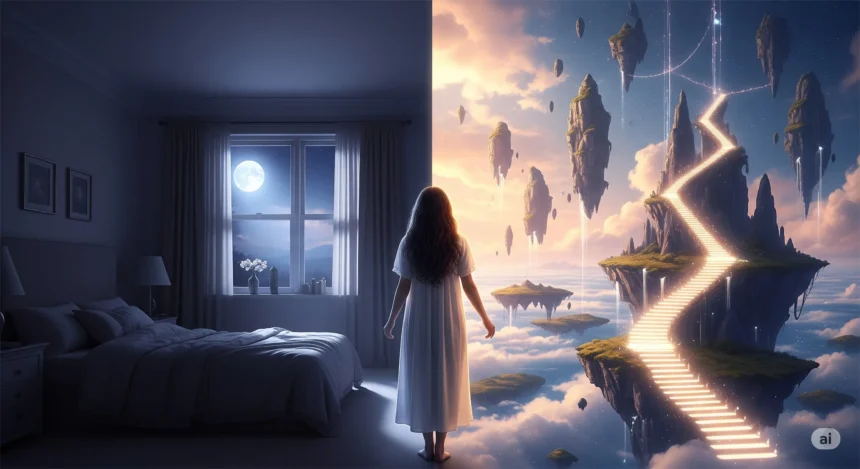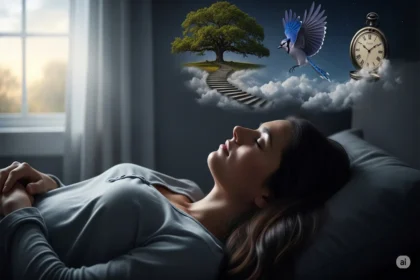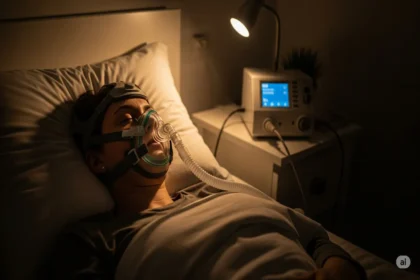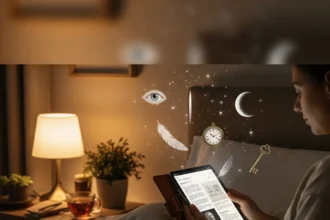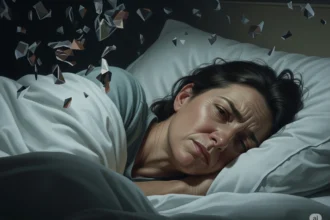The curtains fall on our conscious day, the world outside goes quiet, and then, a new, often bizarre, landscape begins to unfold. For roughly a third of our lives, we embark on nightly journeys into a realm as familiar as it is mysterious: the World of Dreams. From the mundane to the magnificent, the terrifying to the exhilarating, these nocturnal adventures have captivated humanity for millennia, sparking curiosity, inspiring art, and fueling endless debate. Are they random firings of neurons, cryptic messages from our subconscious, or glimpses into other dimensions? While science has yet to fully unravel every enigma, modern research has shed considerable light on what happens when we close our eyes and our minds take flight.
For too long, dreams were relegated to the realm of folklore or purely psychoanalytic interpretation. But as our understanding of the brain and sleep architecture deepens, we’re beginning to appreciate dreams not just as fleeting phantoms, but as crucial components of our mental and emotional well-being. This guide will take you on an exploration of your nightly adventures, offering insights into their science, their potential purpose, and how you can better understand the stories your subconscious is trying to tell.
The Stages of Sleep: Where Dreams Take Center Stage
To truly understand dreams, we must first appreciate the intricate dance of sleep itself. Our sleep isn’t a single, monolithic state; it cycles through distinct phases, each playing a vital role in our rest and rejuvenation.
- Non-REM (NREM) Sleep: This constitutes about 75-80% of our total sleep time and is divided into three stages:
- N1 (Light Sleep): The transition from wakefulness to sleep. You might experience sudden muscle jerks (hypnic jerks) or feel like you’re falling. Dreams here are often fragmented, fleeting, and less vivid.
- N2 (Deeper Sleep): Our heart rate and breathing slow, body temperature drops. We spend about half our total sleep in this stage. Dreams can occur here, but they are typically less vivid and memorable than REM dreams, often described as more thought-like.
- N3 (Deep Sleep / Slow-Wave Sleep): The most restorative stage for the body. Brain waves slow considerably. It’s difficult to wake someone from this stage. Dream recall from N3 is rare, and if it occurs, it’s usually very brief and non-narrative. This stage is crucial for physical repair, immune function, and consolidating declarative memories (facts and events).
- REM (Rapid Eye Movement) Sleep: This is the famous “dreaming stage,” accounting for 20-25% of our sleep.
- Characteristics: Brain activity closely resembles wakefulness, but our muscles are temporarily paralyzed (atonia) to prevent us from acting out our dreams. Our eyes dart back and forth rapidly under our eyelids. Heart rate and breathing become more irregular.
- Dreams: REM dreams are typically the most vivid, elaborate, emotional, and bizarre. This is where most of our memorable “nightly adventures” take place. We usually cycle through REM sleep about 3-5 times a night, with each REM period getting progressively longer as the night goes on. The longest and most vivid dreams often occur in the early morning hours, just before we wake up.
Why Do We Dream? The Unanswered Question with Many Theories
For centuries, dreams were seen as messages from gods, prophecies, or windows into spiritual realms. Modern science, while acknowledging the profound human experience of dreaming, seeks more mechanistic and functional explanations. While there’s no single universally accepted theory, several prominent ideas offer compelling insights:
- Memory Consolidation and Learning: One of the most robust theories suggests that dreams play a vital role in consolidating memories, processing information learned during the day, and strengthening neural connections. During REM sleep, the brain actively replays and reorganizes recent experiences, filtering out irrelevant data and embedding important information into long-term memory. This might explain why students often report vivid dreams after intense study periods.
- Emotional Regulation and Problem Solving: Dreams provide a safe, often bizarre, space for our brains to process complex emotions, fears, and unresolved conflicts from our waking lives. By simulating challenging scenarios or replaying emotional events, dreams may help us regulate our emotional responses, reduce anxiety, and even find creative solutions to problems. The bizarre nature of some dreams, where elements are seemingly illogical, might be the brain’s way of loosening up cognitive associations to find novel connections.
- Threat Simulation Theory: This evolutionary theory proposes that dreams, especially nightmares, serve as a kind of “play-acting” for threatening situations, allowing us to practice fight-or-flight responses in a safe environment. This could have honed our survival instincts in ancestral times.
- Brain Maintenance and Waste Removal: Some theories suggest dreams are a byproduct of the brain’s essential “housekeeping” tasks – clearing out metabolic waste products (like amyloid-beta, linked to Alzheimer’s), maintaining neural pathways, and replenishing neurotransmitters. Dreams, in this view, are less about psychological meaning and more about biological necessity.
- Activation-Synthesis Hypothesis: Proposed by J. Allan Hobson and Robert McCarley, this theory posits that dreams are the brain’s attempt to make sense of random neural signals generated in the brainstem during REM sleep. The cortex then tries to synthesize these disparate signals into a coherent narrative, leading to the often illogical and fragmented nature of dreams. While seemingly “random” in origin, the brain’s interpretation still draws on our personal experiences and memories.
Decoding Your Nightly Narratives: Tips for Understanding Your Dreams
While scientific theories focus on the why and how, many people are captivated by the what – the content of their dreams. Understanding your dreams isn’t about finding a universal dream dictionary that says “a snake means betrayal.” It’s about personal symbolism and reflection.
- Keep a Dream Journal: This is the most powerful tool. Keep a notebook and pen by your bed. As soon as you wake up (even in the middle of the night), jot down everything you remember – images, feelings, sounds, dialogue, plot points. Even fragmented memories can reveal patterns over time. The act of writing trains your brain to prioritize dream recall.
- Focus on Emotions, Not Just Symbols: What was the dominant emotion in your dream? Fear, joy, sadness, anger, confusion? Dreams often amplify our waking emotional states. Understanding the feeling can be more insightful than dissecting every object.
- Identify Recurring Themes and Symbols: Do you often dream of falling, flying, being chased, losing teeth, or showing up unprepared? These recurring themes often relate to persistent waking concerns, anxieties, or desires. Similarly, certain objects or people might appear repeatedly. What do they mean to you?
- Connect to Waking Life: How do the emotions or events in your dream relate to what’s happening in your waking life? Are you facing a big decision? Feeling overwhelmed? Excited about a new project? Dreams often reflect our daily experiences, worries, and aspirations, albeit in a symbolic or exaggerated form.
- Consider Different Perspectives: Sometimes, imagining yourself as a different character or object in your dream can offer new insights. What would the tree feel? What is the chasing monster trying to tell you?
- Avoid Universal Dream Dictionaries (Mostly): While some symbols have cultural archetypes, their meaning is deeply personal. A snake might represent fear to one person, wisdom to another, or simply a pet to a third. Your personal associations are key.
- Pay Attention to Your Wake-Up State: How do you feel immediately upon waking from a dream? Jittery? Calm? Confused? This lingering emotional residue can provide clues to the dream’s emotional content.
- Mini Case Study: John frequently dreamed of being unable to speak, no matter how hard he tried. After starting a dream journal and reflecting, he realized these dreams coincided with a period at work where he felt his ideas weren’t being heard by his boss. The dream was a powerful, symbolic representation of his waking frustration and sense of voicelessness. Once he addressed the communication issue at work, the dreams diminished.
The Mysteries Endure: Lucidity, Nightmares, and the Unexplained
Even with growing scientific understanding, the world of dreams retains its profound mystery.
- Lucid Dreaming: The fascinating phenomenon where the dreamer becomes aware they are dreaming and can sometimes control the dream narrative. Research suggests this involves heightened activity in the prefrontal cortex, associated with self-awareness and executive functions. Some people actively cultivate lucid dreaming for problem-solving, creative exploration, or overcoming nightmares.
- Nightmares: While often distressing, nightmares are also a part of the brain’s processing system. They can be triggered by stress, trauma, certain medications, or sleep deprivation. Understanding their triggers and sometimes re-scripting them (as in Imagery Rehearsal Therapy) can be therapeutic.
- The Unexplained: Despite all our tools, there are still aspects of dreaming that defy easy explanation. The sudden appearance of highly creative solutions, seemingly prophetic elements, or dreams shared by multiple people remain intriguing avenues for future research.
The nightly journey into the world of dreams is a privilege and a profound aspect of the human experience. Far from being random neurological noise, dreams are a testament to the brain’s ceaseless activity, its tireless work in consolidating memories, regulating emotions, and processing the vast symphony of our lives. By cultivating a greater awareness of our dreams, by taking the time to recall and reflect, we gain not just fascinating insights into our subconscious, but a deeper understanding of ourselves. So, as you drift off tonight, remember the extraordinary adventure that awaits. Your mind is about to take flight, and the stories it tells might just hold keys to your waking life.
Disclaimer: The information provided in this article is for general informational purposes only and does not constitute medical advice. It is not a substitute for professional medical advice, diagnosis, or treatment. Always seek the advice of your physician or other qualified health provider with any questions you may have regarding a medical condition. Never disregard professional medical advice or delay in seeking it because of something you have read on this website.

